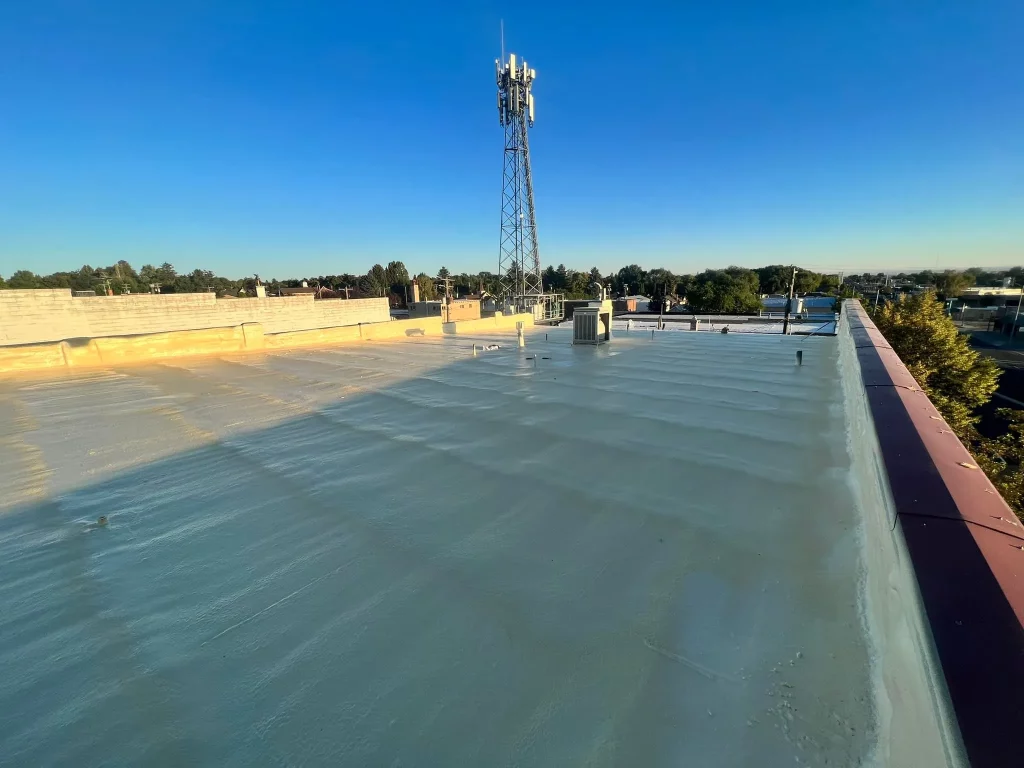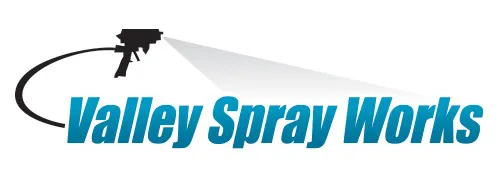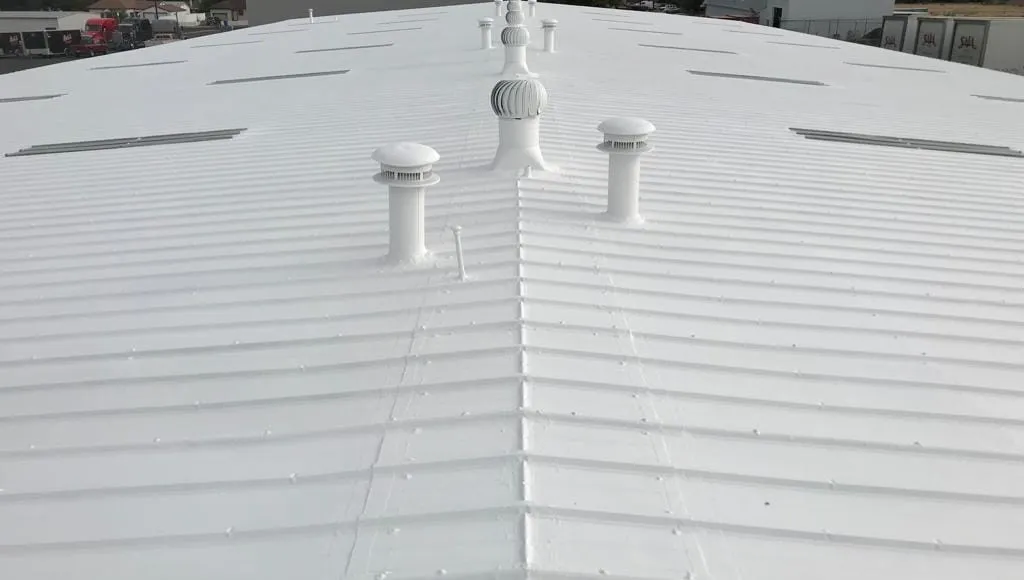Commercial roofing in Caldwell, ID is trusted because it responds directly to the region’s unpredictable freeze-thaw cycles, prolonged sun exposure, and occasional heavy winds. Businesses rely on roofing solutions that are proven to extend service life, prevent water infiltration, and maintain thermal performance in this unique climate. Experience with local material behavior, weather response, and substrate compatibility are non-negotiable.
Valley Spray Works has worked across various structures in Canyon County and understands how different roofing systems handle seasonal thermal shifts, solar degradation, and moisture entrapment. This guide outlines material specifications, application strategies, and system performance indicators relevant to Caldwell’s environment.
Local Environment Shapes Roofing Decisions
High Desert Weather and Roofing Resilience
Caldwell experiences temperature swings from 20°F winters to 100°F summers. Roofing materials must tolerate expansion and contraction without cracking or losing adhesion. Single-ply systems often degrade under such stress. Fluid-applied systems and closed-cell spray foam show higher retention of tensile strength and thermal resistance.
Moisture Management and Air Sealing
The Treasure Valley’s sporadic rainfall and occasional snowmelt require systems that resist water ingress and provide integrated air barriers. Open seams and mechanical fasteners often fail where ponding is present. Spray foam roofs and vapor barriers create a seamless layer, reducing failure points and condensation risks.
Bonus Tip: Always check for parapet wall transitions. They’re a common failure point in Caldwell roofs exposed to thermal bridging.
System Types and Performance Comparisons
| Roofing System Type | Water Resistance | Thermal Insulation (R-Value per inch) | Expansion Tolerance | Seamless Installation | UV Resistance |
|---|---|---|---|---|---|
| Closed-Cell Spray Foam | Excellent | 6.5 – 7.0 | High | Yes | High |
| Single-Ply (TPO/PVC) | Moderate | 3.0 – 3.5 | Moderate | No | Moderate |
| Modified Bitumen | Moderate | 3.5 – 4.0 | Low | No | Low |
| Fluid Applied Coating | High | Varies (used over insulation) | High | Yes | High |
Technical Specifications for Spray Foam and Coating Systems
| Specification | Closed-Cell SPF | Fluid Applied Coating | Intumescent Coating |
|---|---|---|---|
| Average Dry Film Thickness | 1.5″ to 3″ | 20 – 60 mils | 10 – 30 mils |
| Water Absorption (ASTM D2842) | < 2% | < 1% | N/A |
| Tensile Strength (ASTM D1623) | 40 – 60 psi | 2500 – 4000 psi | 500 – 1500 psi |
| Flame Spread Index (ASTM E84) | < 25 | Varies | < 25 |
Bonus Tip: For re-roofing over metal decks, use closed-cell foam with thermal barrier coatings. This improves adhesion and meets ignition barrier code requirements in Idaho.

Market Data Supports Long-Term Investment
- According to IBISWorld (2024), commercial roofing demand in Idaho grew by 6.3% due to increased facility upgrades in logistics and food processing sectors.
- An Energy Star report confirms that spray foam roofs reduce energy use by 10%-15% in hot/dry climates like Caldwell (U.S. EPA, 2023).
- FEMA guidance ranks closed-cell SPF among top materials for flood-prone zones due to low permeability and structural rigidity.
Pre-Decision Factors for Business Owners
Before selecting a commercial roofing system in Caldwell:
- Structure Use: Cold storage, warehousing, and office buildings require different R-values and vapor profiles.
- Deck Type: Wood, concrete, and metal each interact differently with adhesives and sealants.
- Slope & Drainage: Flat roofs need positive drainage planning; foam systems help form custom slopes.
- Compliance: Verify fire resistance and insulation codes with the City of Caldwell and Canyon County.
Bonus Tip: Schedule core cuts and infrared scans before replacing any existing roof. This uncovers moisture issues that impact application compatibility.
Solutions Valley Spray Works Offers for Commercial Roofing
- Closed-Cell Spray Foam: Delivers superior insulation and structural reinforcement in a single application.
- Fluid Applied Vapor Barrier: Creates an uninterrupted moisture block, ideal for roof decks and parapets.
- Intumescent Coatings: Improves fire resistance on spray foam and structural steel surfaces.
- Spray Foam Roof Insulation: Forms a monolithic seal that resists leaks and improves energy efficiency.
What Businesses Commonly Ask Before Committing
Which system lasts longest under Caldwell weather?
Closed-cell foam with a UV-resistant topcoat lasts 20+ years with minimal degradation in high solar exposure.
Can coatings be used over existing roofs?
Yes. Coatings adhere well over aged TPO, EPDM, or metal when substrate prep and moisture conditions are verified.
Do these systems meet building code in Canyon County?
All listed systems, when installed correctly, meet local fire, insulation, and vapor transmission code standards.
How long does application take?
Spray foam systems typically install in 1-3 days for mid-sized commercial roofs depending on size and weather.
Evaluate System Fit with Local Needs
Caldwell businesses benefit most from systems that address long-term weather durability, structural adaptation, and air sealing efficiency. Foam-based roofing combined with fluid-applied barriers suits low-slope commercial roofs common in the area. Property owners should weigh system compatibility with deck type, thermal demand, and lifecycle performance rather than short-term solutions.
Contact Valley Spray Works
Discuss system compatibility, application timelines, or local material sourcing directly with Valley Spray Works. Reach out via phone at (208) 539-5281 or email [email protected] to evaluate your structure’s roofing needs. A site-specific recommendation often leads to longer-lasting performance.
Ongoing Use and Optimization Guidance
How should the roof be maintained after install?
Perform visual inspections twice annually. Remove debris, check for UV coating wear, and reapply coatings as needed.
Can mechanical units be placed on spray foam roofs?
Yes, but curbs should be installed with proper flashing or reinforced foam forms to support equipment weight.
What affects performance over time?
UV degradation, standing water, and mechanical damage from foot traffic. Use walk pads and recoat UV barriers every 10 years.
Are these systems compatible with solar arrays?
Yes. Ensure foam thickness supports anchoring loads, and coordinate with solar installers to protect roof integrity.



